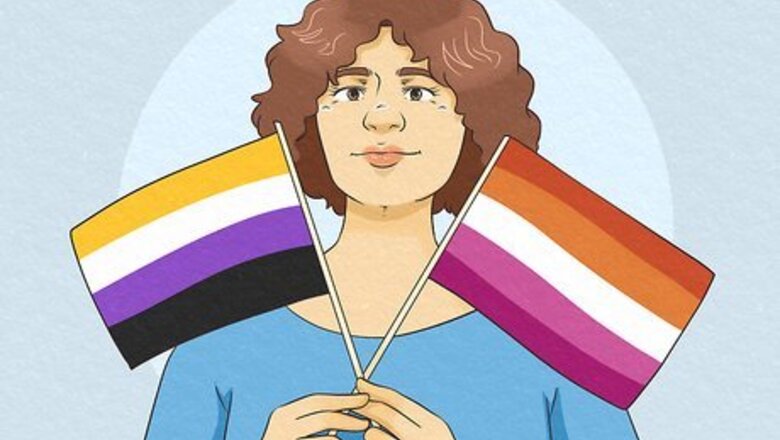
views
- You can identify as a nonbinary lesbian! You can identify with whatever label works best for you.
- Although “lesbian” is associated with women who love women, lesbian spaces have always been gender-nonconforming.
- Today, sexuality & attraction are separate from gender identity, which means you can identify as transgender, nonbinary, etc., and straight, bisexual, lesbian, etc.
Can you identify as a nonbinary lesbian?
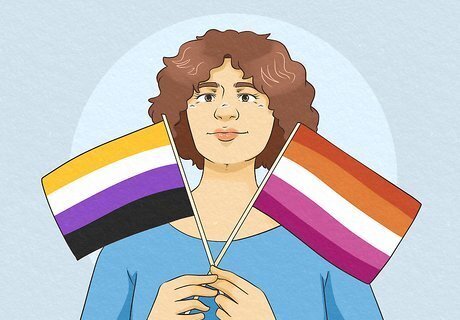
Yes, you can identify as both nonbinary and as a lesbian. Sexuality & attraction and gender identity are distinct parts of being human, and how a person identifies is up to them. Even though the term “lesbian” has long been associated with women’s attraction to other women, many argue that “lesbian” is a gender-nonconforming term. A person can use whatever label they’d like to, and there is no "right" or "wrong" answer for how they should identify. Labels and language are always changing and shifting. Although “lesbian” is typically used to describe women who are attracted to other women, inclusive transgender and nonbinary movements have made it more common for gender-nonconforming people to identify as lesbian or queer. Additionally, many folks assigned female at birth, regardless of how they identify their gender, have strong affiliations with and find comfort in, queer women or lesbian spaces. If you identify as a nonbinary lesbian, it doesn’t automatically mean you’re straight. Sexuality & attraction are about who gives you butterflies so there isn't always a concrete label, especially when you don’t fit into the male/female gender binary. There are tons of labels people use beyond lesbian and straight, like bisexual, queer, gay, pansexual, etc. Only you get to decide which labels make sense for you.
History of the Term “Lesbian”
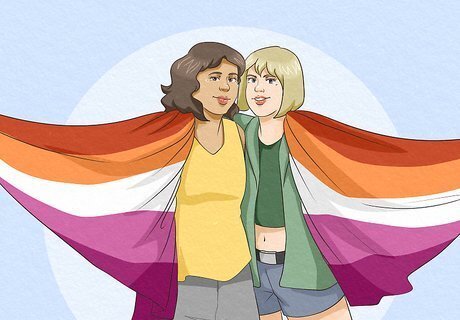
“Lesbian” usually describes a woman who is romantically and/or sexually attracted to other women. However, some nonbinary and transgender people also use the term “lesbian” to describe their sexual orientation. In history, the line between gender and sexuality was often blurred, especially for women. Many lesbian women dressed in gender-nonconforming ways to enter male-dominated and queer spaces. The actual word “lesbian” comes from and is associated with the poetry of Sappho, a woman from the ancient Greek island of Lesbos who often wrote about loving women.

Gender bending has been an aspect of lesbian culture for years. As far back as ancient Egypt, women dressed as men to get opportunities, including access to male spaces and relationships with other women. In early 20th-century Paris, androgynous-looking lesbians were often dressed in traditionally male clothing, and as early as 1950, women dressed in more masculine clothing often identified as or were called butch lesbians or butch women. In the 1950s, lesbians followed and eventually played around with their own system of gender roles–“femme” lesbians were more feminine-dressing women, while “butch” lesbians were more masculine.
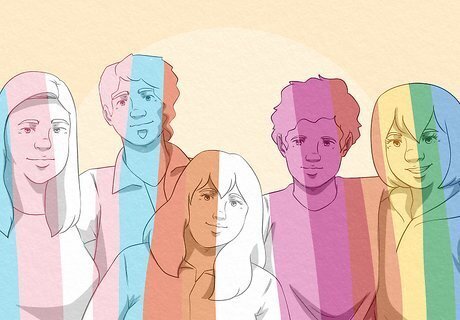
Trans folks grew more visible as the modern-day gay and lesbian civil rights movement evolved. In the 1990s, tensions between trans and lesbian activists were high because some lesbians believed that the inclusion of trans men in “women born women only” spaces threatened women’s safety and independence from men. However, attention to gay and lesbian issues also gave space for trans and nonbinary individuals to tell about their experiences. Although there isn’t a pride flag for nonbinary lesbians yet, the dark orange stripe on the 5-striped and the more widely-used 7-striped lesbian flag represents gender nonconformity, which includes lesbians who identify as transgender, genderqueer, nonbinary, etc. Today, gender and sexuality are vibrant and diverse in both expression and language. Lesbians can use labels such as genderqueer, transmasculine, nonbinary, or gender-nonconforming to describe their gender identity.
History of the Term “Nonbinary”
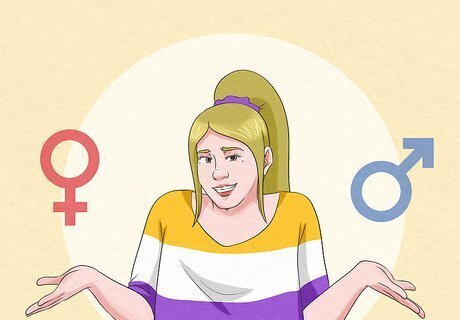
“Nonbinary” describes a person who doesn’t identify as a man or a woman. Nonbinary is often used as an umbrella term that encompasses other gender identities, such as agender, bigender, genderqueer, or gender-fluid. Nonbinary people can identify as being both a man and a woman, somewhere in between, or neither. Terms like “transgender” and “nonbinary” refer to gender identity or expression, which are separate from sexuality and attraction. This is why people who identify as transgender or nonbinary can also identify as straight, gay, lesbian, bisexual, etc. Terms like “transgender” and “nonbinary” refer to gender identity or expression, which are separate from sexual orientation. This is why people who identify as transgender or nonbinary can also identify as straight, gay, lesbian, bisexual, etc.
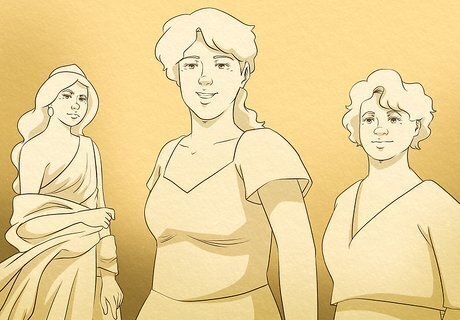
Identities outside of the man/woman gender binary have existed for centuries. The earliest accounts of transgender people come from civilizations in ancient Mesopotamia, Greece, and Rome. Some indigenous and South Asian communities acknowledge a third gender outside of the gender binary. The term “transgender” became widely used during the 1990s. However, scholars have tracked the term’s origins all the way to the 1960s, when it was used in medicine and by early trans activists like U.S. Army veteran Jorgensen and Transvestia magazine publisher Virginia Prince. Additionally, trans and gender nonconforming folks have existed across time and cultures, including before Western notions of and words around identity were created.
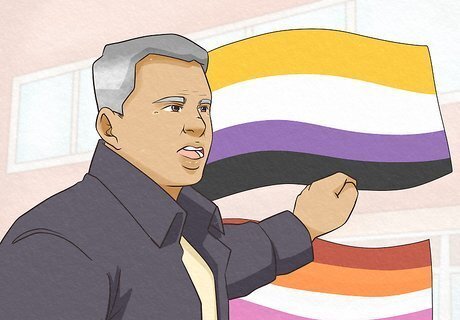
Leslie Feinberg’s work cleared the way for terms like “nonbinary.” Leslie Feinberg (zie/zir or she/her) was a writer and activist who identified as a “transgender lesbian,” living and working in working-class butch lesbian circles. In zir 1992 pamphlet, Transgender Liberation: A Movement Whose Time Has Come, the term “transgender” took on a new meaning as a wider, political term for all kinds of gender variations. Under the “transgender” umbrella, people coined terms like “genderqueer” and “nonbinary” to more accurately describe their identity. Language is always changing and growing to accommodate the growing gender spectrum. Today, sexual orientation is considered separate from gender identity, which means you can identify as nonbinary, genderqueer, transgender, etc., and also identify as gay, straight, bisexual, etc.
Trying Out Labels

Only you get to decide which labels make sense for you. If you feel like “nonbinary lesbian” is a label that resonates with you, try it out! It’s totally normal to be curious about and continue to try on new identity terms to describe your sexuality, attraction or gender identity. It’s also completely normal to try out different labels to see what fits you the best. Remember to respect the labels that others choose for themselves. You don't need to understand why someone identifies a particular way as long as their identity makes sense to them. If you don’t know what name or pronoun to use, don’t be afraid to ask with respect and curiosity. It’s also completely okay to use no labels at all. Labels can be comforting, but for some people, they can feel restricting. Do whatever feels best for you!
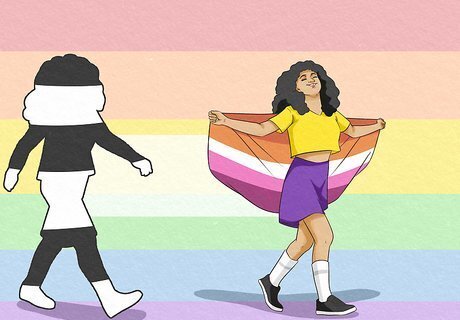
Consider thinking of your labels as checkpoints, not endpoints. It's easy to become overwhelmed by labels and definitions, but remember that how you identify doesn’t have to be permanent or for forever. Give yourself room to grow and change – explore who you are and what feels right–this is a normal part of human development!
















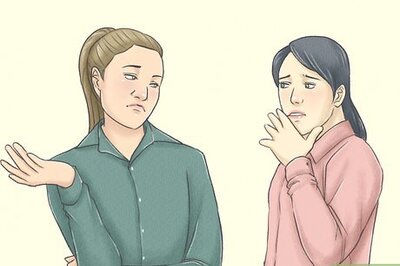

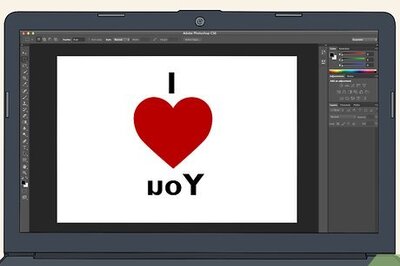

Comments
0 comment